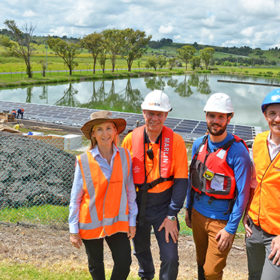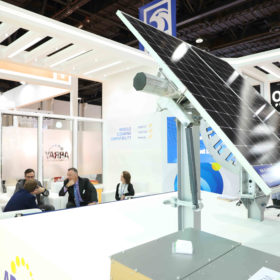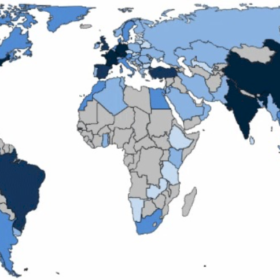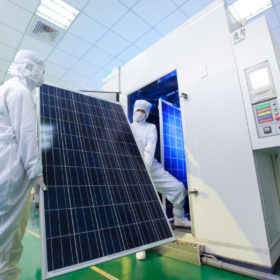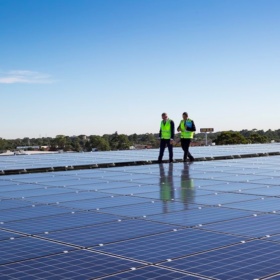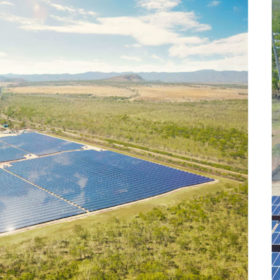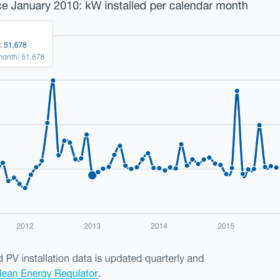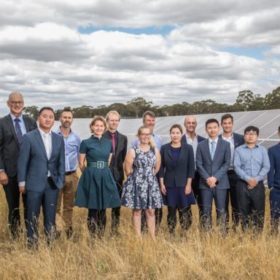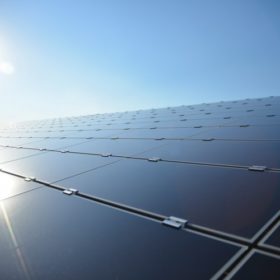Solar PV now employing 10,000 Australians
Australia’s large-scale and rooftop solar PV sectors now employ over 10,000 people. The findings were published today in Green Energy Market’s Renewable Energy Index for January 2018.
GTM: Australian tracker “exploded” in 2017, 1.4 GW deployed
The use of PV trackers in utility scale solar arrays in Australia broke all records in 2017, with the technology being deployed in more than 90% of plants under construction. GTM Research has revealed the findings to pv magazine Australia, drawn from its Global Solar PV Tracker Market Shares and Shipments 2018 report.
Report: Asia Pacific to lead renewable deployment 2017-2027
The next decade will see the Asia-Pacific region cement its position as the global leader for the deployment of non-hydro renewables, with over 500 GW of new capacity being added. BMI Research published the finding last week as a part of its Global Renewables Forecast.
CEC steps up solar suspensions, delistings
As a part of its expanding quality and certification program, the Clean Energy Council has taken action to suspend or delist eight solar suppliers in the first two months of 2018. The action has applied to 156 PV module or inverter models, including Shenzhen Sofarsolar inverter 3000TL, which the CEC announced on Wednesday had failed testing.
SA Labor sets 75% by 2025 RET
The South Australian Labor Party has increased its Renewable Energy Target to 75% by 2025. It also plans to introduce a target of meeting 25% of the state’s peak electricity demand with stored renewables – equating to 750 MW of storage capacity.
Lakeland solar+storage to demonstrate value stacking at utility scale
Australia’s first large scale solar+storage array has been grid connected, in Northern Queensland. The collocated 10.8 MW solar and 1.4 MW/5.3 MWh battery storage system is set to demonstrate the value of dispatchable PV to networks and asset owners.
Yeah but nah: Aussie solar going gangbusters, but installed capacity not doubling in 2018
There is absolutely no doubting that the installation rate of solar PV, both rooftop and utility scale, is growing extremely quickly. An exciting development, yeah, but installed capacity isn’t likely to double in 2018.
Gullen Solar Farm kicks off co-location in NSW
The Australian Wind Alliances’s NSW regional coordinator, Charlie Prell, attended the launch of the new Gullen Solar Farm at Bannaby, just south of Crookwell in the Southern Tablelands of NSW.
IEA: changing policy, lack of competition failing Australian energy transition
The International Energy Agency (IEA) has delivered its latest detailed energy policy review to the Australian Federal Government. It points to changing policy at the Federal level as having failed Australia’s energy transition and consumers, and argues for the need for a framework to be put in place for 2030.
innogy to acquire two NSW projects worth 460 MW, open Australian subsidiary
Germany’s innogy is set to acquire the Limondale and Hilston utility scale solar projects in New South Wales from developer Overland Sun Farming. The two projects have a combined capacity of over 460 MW.

